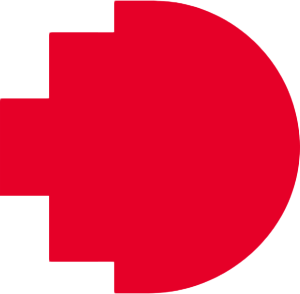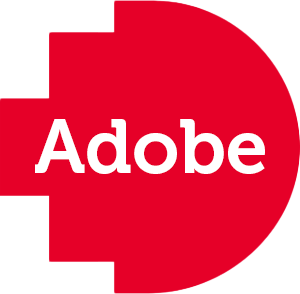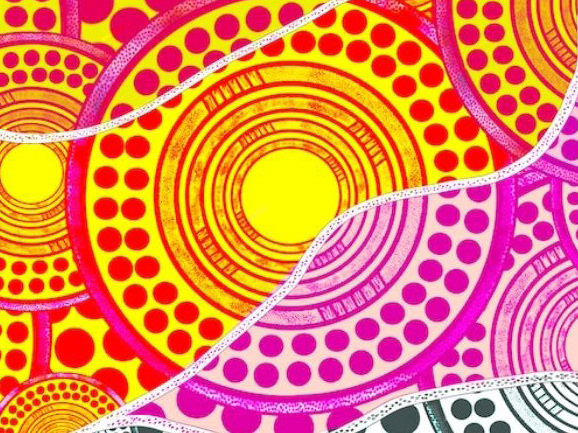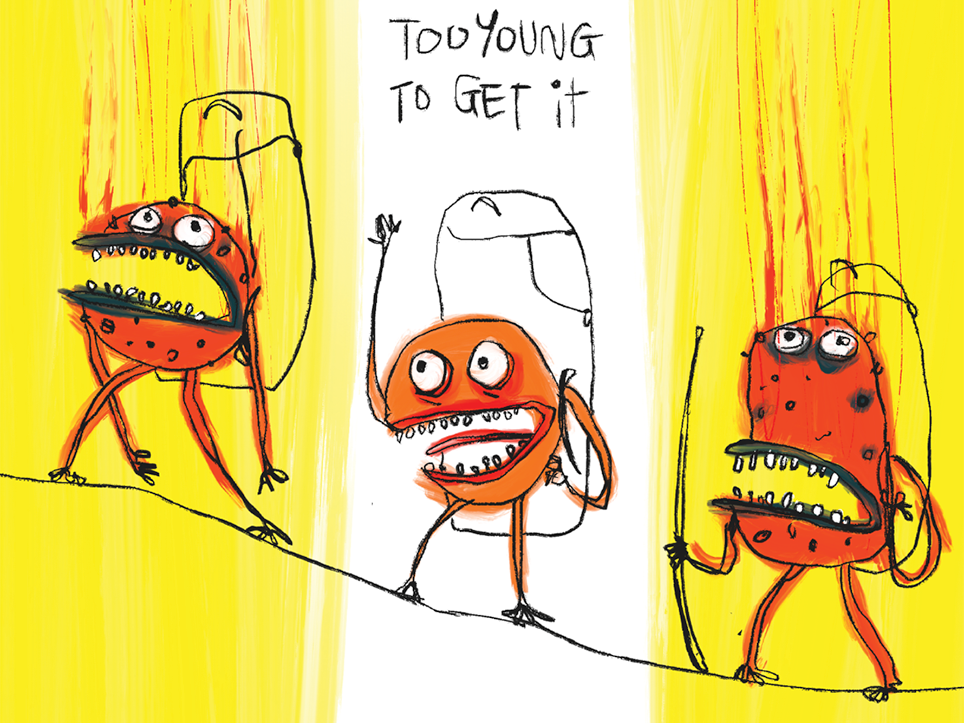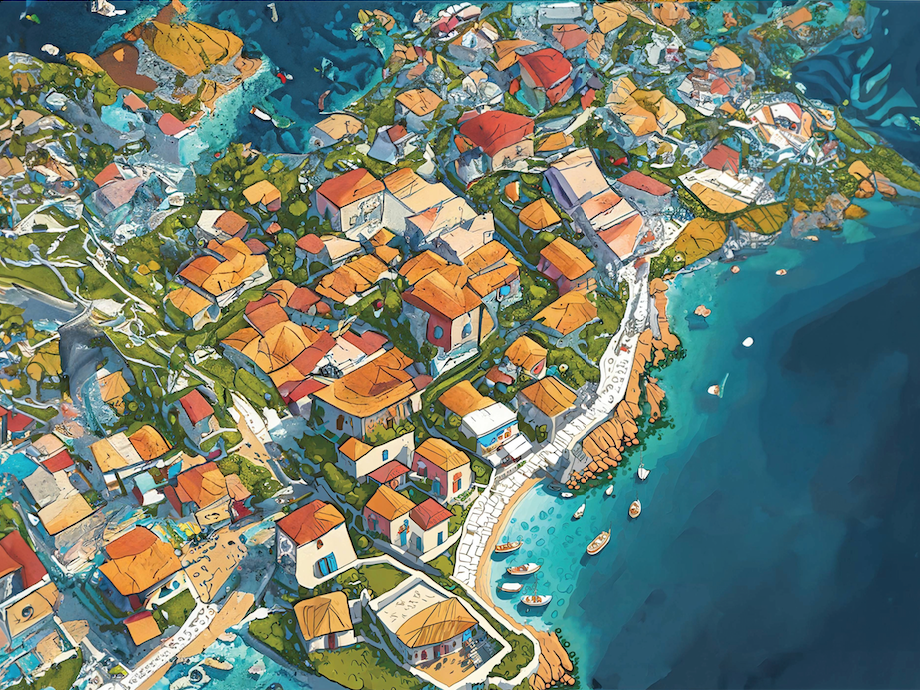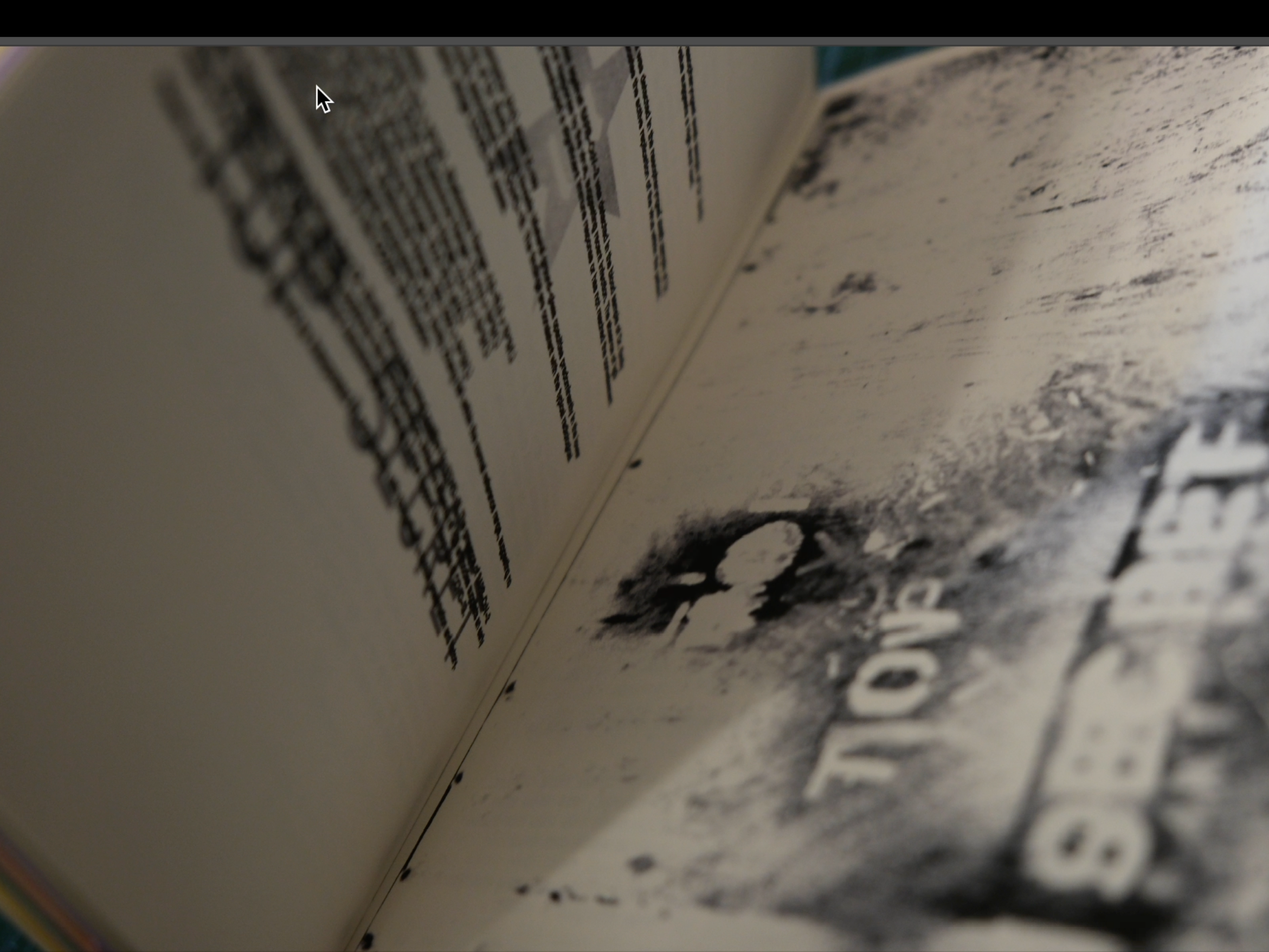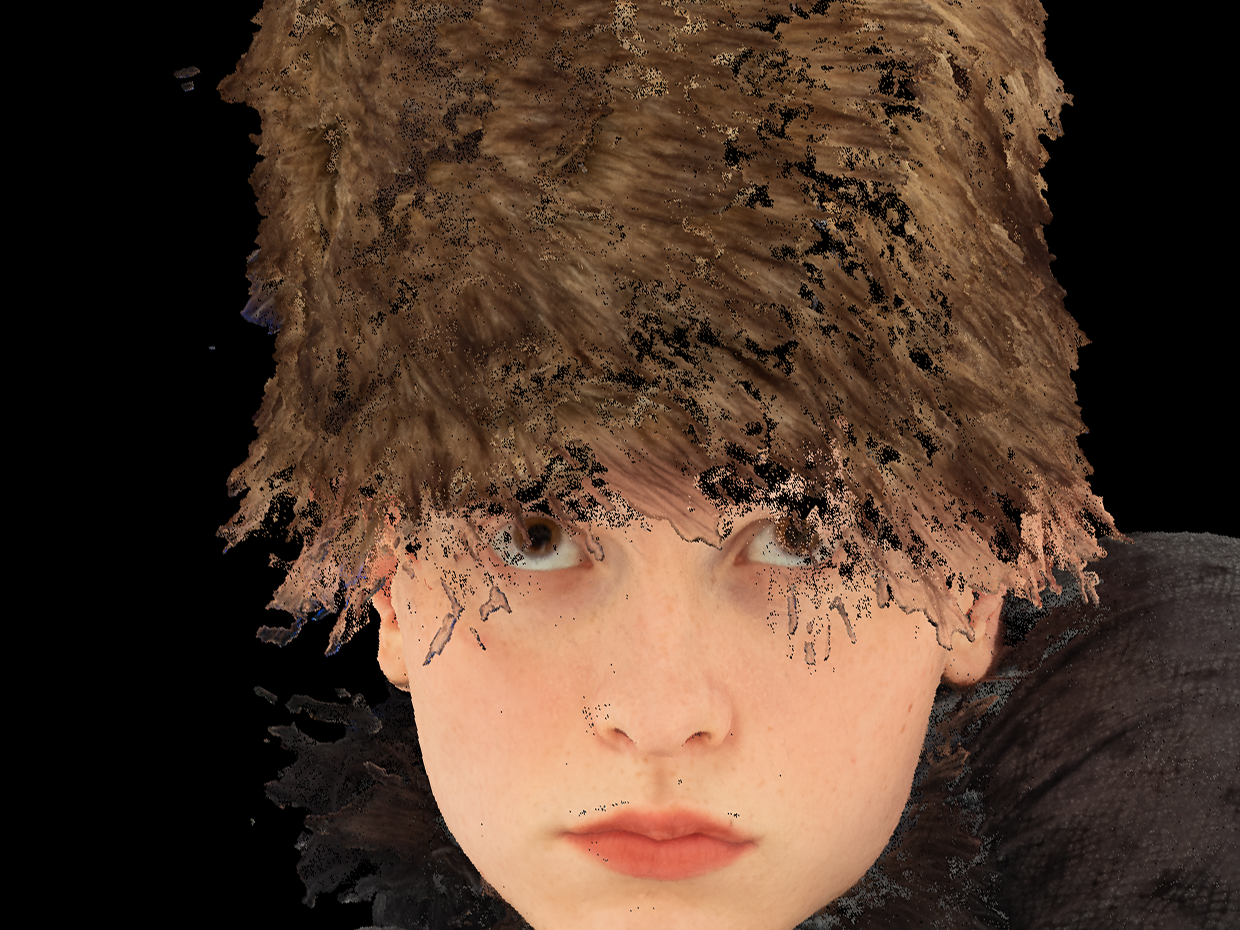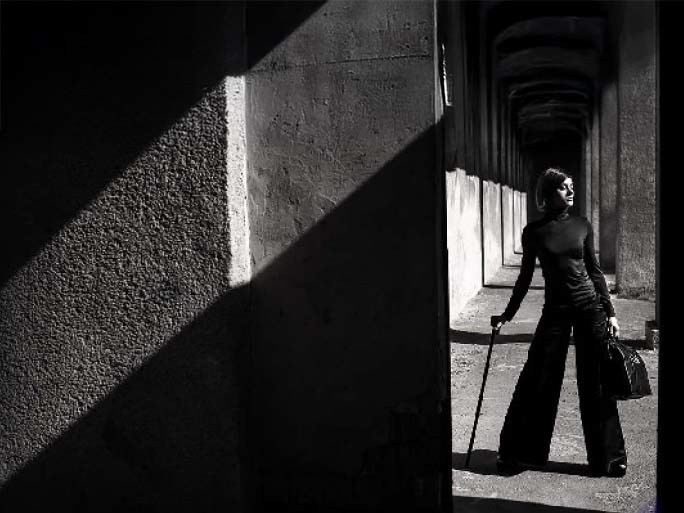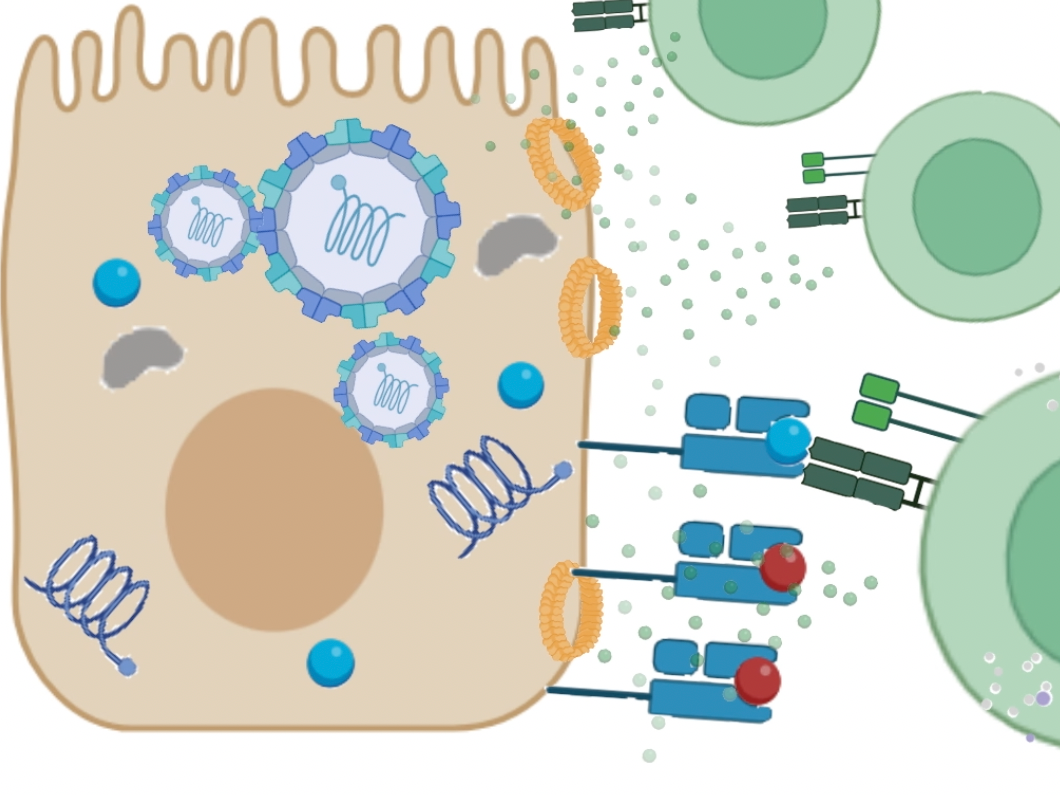Student work from Lucas Sakell, 2023
Graphic Design
Responding to wicked problems in, and through, flexible curriculum design and critical interrogation of emerging technologies
The impact of Artificial Intelligences on future practices in graphic design
Russell Kerr
Program Director, Bachelor of Design (Communication Design) Honours
Program Director, Bachelor of Design (Communication Design) Honours
Leigh Whetter
Industry Fellow, Communication Design
Industry Fellow, Communication Design
This project explores a flexible and innovative curriculum design that responds to emerging shifts in disciplinary practice. The impact of Artificial Intelligence (AI) in the Communication Design field is used as a platform to design a vertically integrated studio that can critically examine the impact of AI on the practices of Art and Design students. The studio was run as a pilot in semester 1 2023 with Communication Design students in an experimental learning space that was a critical component of the curriculum design. Both the physical space and the subject matter worked together in a framework that facilitated students’ creative responses to AI.
Resources
> Teacher resource
> Assessment item
> Student instructions / resource
> Criteria sheet / marking rubric
Problem Statement
We are on a precipice of change that will affect many designers and design educators. Design practice and education will be integral in the uptake and evolution of ‘creative’ AI, along with the new ways of working it will afford, but industry practice and education will, undoubtedly, be radically transformed by these changes. To that end, what is the role of the designer in this age of transformation, as society engages and interacts with artificial intelligence and machine learning? What new categories of design practice will emerge in this rapidly evolving technological era?
Given the rise of generative visual AI platforms such as Dall-E, Midjourney, Leonardo.AI, Playground.AI, and Adobe Firefly (et al), students now have access to global digital tools enabling efficient generation of captivating visual content. Content that would traditionally demand much more time, effort and ‘design-related’, or specialist, skills to complete. In a design education context, how can we, as educational facilitators, motivate students to cultivate ‘natural intelligence’ graphic design skillsets–including illustration, typography, photography, written and visual language–rather than relying solely on AI for these tasks?
How might a design studio brief integrate a component focused on work-in-progress to foster the iterative development of creative solutions and monitor the advancement of creative idea and context? Can a Work-In-Progress Portfolio function independently as a creative artefact–exhibiting a student's authentic creative process–while also facilitating critical evaluation of an original idea or concept for the purpose of academic assessment?
Project Overview
This project delves into a dynamic and innovative assessment approach tailored to adapt to evolving trends in disciplinary practice and the authentic evaluation of student work – The Work-In-Progress Portfolio (WIP Portfolio).
The WIP Portfolio was introduced within a vertically integrated studio, involving second and third-year students enrolled in the Bachelor of Design (Communication Design) program at RMIT University. Primarily focused on experimental typography, the WIP Portfolio Brief constituted 40% of the students' academic endeavours for a semester. This allocation encourages students to cultivate contextual thinking, creative expression, and a diverse set of 'making' skills, encompassing both analogue and digital approaches that align with the development of 'natural intelligence' processes. It explicitly delineates the areas where AI can or cannot be integrated into their Work-In-Progress (WIP) process. Operating within a studio framework, the subject encouraged creative responses and experimentation including purposeful engagement with visual Artificial Intelligence tools–underpinned by an ethical foundation of academic integrity.
Students were tasked with documenting their design iterations on a weekly basis. The expectation was for students to actively engage with their design outcomes and compile their design processes—utilizing screen shots, notes, diagrams, and preserving design iterations—in a digital publication.
Additionally, students had the option to create a physical WIP Portfolio artefact alongside the digital PDF, with the minimum requirement being 150 pages.
Additionally, students had the option to create a physical WIP Portfolio artefact alongside the digital PDF, with the minimum requirement being 150 pages.
Emergent Outcomes
The WIP Portfolio was discussed in detail with students as part of this Adobe X Creative Curriculum Grant. In the studio recordings, students and Leigh Whetter discuss the perceived value of such ‘authentic process development’ work, including the impact of AI upon their process, as it is happening–in the present.
Following earlier conversations pertaining to WIP Portfolio ‘outcomes’ and ‘development’ (Semester 1), Lucas Sakell, a 3rd Year student, stated that “context becomes paramount” when looking to produce original and authentic works and artefacts. He believes this stems from the development of idea and ‘freedom of process’ undertaken in the WIP Portfolio Brief. To discover ‘context’ was to recognise the importance of ‘natural intelligence’, language and communication methods inspired by experimentation, expression and conceptual thinking throughout a Semester’s work–all articulated, evidenced and presented as part of the WIP Portfolio. The ‘voice’ this imbued in Lucas’ work was crystal clear, intellectual, and carried through to completion, and presentation, of his superb SKO.
Lucas added “The WIP Portfolio Brief in conjunction with accompanying Studio Briefs] allowed for [free-thinking] and experimentation at an unconventional level. Not conforming to traditional constraints and happily breaking stuff and making mistakes [led to] transforming failures into valuable insight and informing future creative practice”. Lucas also commented that by immersing oneself in ‘natural intelligence processes’, “…designing without resorting to my first ideas has really forced me to investigate my true intentions towards my thinking–distilling my initial ideation down to its truest, most refined state”.
We see the WIP Portfolio Brief as a ‘call to action’ to students. It also serves as a call to action for teaching staff, in that it provides a solid base from which we may form an ‘opinion’ on student ability, integrity, originality and authenticity. Periodic ‘check-ins’ to identify how work is being developed in the WIP often evidences a student’s standpoint and commitment (or lack thereof) to process. This provides multiple opportunities for formative ‘feedback’ from peers, and cements good work ethic in many students. It develops confidence in expression, written and spoken word, and creative skill. By regulating the use of AI within this process, we can ascertain ‘authentic’ individual student approaches to problem solving–their ‘voice’ (i.e. not ChatGPT’s or other AI). The offshoot of this process is generally proved positive in final outcomes and presentations. Students are required to refer to their WIP Portfolio undertakings as an integral and cohesive component of the Final Project (SKO) deliverables. If their ‘voice’ differs dramatically in final outcomes or verbal presentations, it is easy to pick up and can be flagged as a potential academic integrity issue–likely pertaining to the use of AI.
Digital Capability Building
At RMIT, we endeavour to support students in developing their digital fluency in order to realise their full potential. Upon graduating, it is intended that students will be confident in creating and utilising a blend of digital and human skills, tools and emerging technologies to learn, solve problems, innovate, communicate and collaborate.
The Work In Progress (WIP) Portfolio serves as a platform for students to cultivate critical and analytical digital literacy, particularly in the realm of visual image creation. Through meticulous documentation of their creative process and ideation, students can account for the ethical implications inherent in the use of Artificial Intelligence tools. This knowledge empowers students not only to utilize these tools as intended but also to delve deeply into their functionalities, whilst recognising the ethical responsibilities that reside with the designer.
Remarkable outcomes arise when students challenge the assumptions underlying AI image generation and explore methods to broaden the scope of generative AI, thereby enhancing–by design or ‘accident’–original idea and concept. The WIP Portfolio encourages students to integrate a variety of technical skills, extending concepts and proposed, contextual solutions in response to a given brief. The capacity of an assessment item to seamlessly blend analogue and digital tools, and emerging technologies, underscores a student's breadth of learning and establishes an expansive evidence base for the authenticity and originality of any proposed final outcome.
Key Learnings
The learnings from this studio and practice, and the utilisation of the WIP Portfolio, can be applied to future vertically integrated studios as well as more traditional educational settings in a range of disciplines.
This WIP Portfolio operates as a ‘benchmark’ for the development of integrity of self and work. Many students have commented about the value of the WIP Portfolio, even if it has not been recognised immediately. One alumna has noted that this method of ‘authentic process development’ and ‘discovering context’, and being able to reflect upon it, has been an ongoing asset in her professional work and life.
Designed to challenge students' perspectives, the WIP Portfolio seeks to foster self-directed learning and critical thinking. It aims to empower students to be self-analytical, proficient in research, and transparent in the deliverables they submit.
The WIP Portfolio is a flexible framework that can be adapted to emerging practices and spontaneous world events. The core principles of self-directed learning and critical thinking often become visible to students after the WIP Portfolio is completed and when a reflective assessment task is added to the structure of a brief, or as an additional assessment item.
WIP by student Lucas Sakell, 2023
